Seasons – December 2021

From the Plateau Land & Wildlife Management Team
Sleigh bells are ringing, carolers are singing, and cookies are in the oven – although the weather has been mild so far, the calendar indicates 2021 is drawing to a close and 2022 is just a few short weeks away.
December is one of the best months of the year, but let’s face it, everyone is crazy busy. Between the holiday shopping, parties, and merry making, we encourage you to think about your land and wildlife management journey. This Seasons is full of year-end considerations for landowners including annual report requests, activity suggestions for wildlife management properties, estate planning and more.
The holiday season is a time for evaluation of our successes and challenges – a time of reflecting and looking forward. As you tie your final ribbons on gifts and reflect on the closing of another year, be sure to add wildlife management valuation to your list of those things you did right this year – because an investment in the enjoyment of your land, the heritage of land ownership, and protecting our natural resources is something that will pay dividends for many more years to come.
Wishing you Happy Holidays and prosperous New Year.
Until next Seasons,
The Plateau Team
Table of Contents
End of the Year Wildlife Activities
An Update on Chronic Wasting Disease
Service Spotlight: Winter Webinar Series
Top 5 Things to Consider When Crafting Your Estate Plan
Field Notes: Pictures & Highlights of Properties in Wildlife Management
News for Texas Landowners
End of the Year Wildlife Management Activities
By Kameron Bain, Landowner Account Manager
As the end of the year rapidly approaches, we want to make sure you are on track to finish your qualifying wildlife management activities and that they are well documented. The good news is, if you still need to meet any of your wildlife management requirements for 2021, it’s not too late. There are plenty of winter activities to choose from, and of course, Plateau is always here to help when you need us.
Year-End Wildlife Management Activities
- Brush management
- Wintering and resident bird survey
- Remote camera wildlife survey
- Deer, wild pig and exotic harvest
- Re-seeding wildflowers and native grasses
- Strip mowing and discing
- Chemical control of prickly pear
- Cut-stump herbicide treatments
- Tree and shrub planting
- Brush pile construction
- Wildlife products and installation (food, water, shelter)
All of our Plateau products and services are designed to fulfill your wildlife management activity requirements.
Uncertain about whether or not you’re meeting wildlife management requirements? Plateau can help!
- Annual Report ($495): Let the experienced team at Plateau professionally prepare this important report and rest assured that it’s been done right.
- Wildlife Management Activities Check-Up ($595): Assess your property, documentation and current activities with a Plateau biologist to ensure compliance.
If you have questions about any of your activities or are interested in purchasing a Plateau product or service, please contact us at (512) 894-3479 or email [email protected].
Back to TopBack to Top
An Update on Chronic Wasting Disease
By Shane Kiefer, Chief Operating Officer, Director Of Ecological Services, Certified Wildlife Biologist, Senior Property Tax Consultant
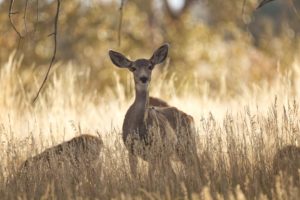 Hunting in Texas is a two-billion-dollar-plus industry that is supported by rural lands and landowners. Since its 2012 emergence in Texas in a free-ranging mule deer population, chronic wasting disease has changed the game for some hunters and landowners across the state. A lot has changed since we last updated this article in 2020. Unfortunately, not for the better. The Texas Parks and Wildlife Department (TPWD) recently adopted updated rules to improve monitoring of deer breeding facilities and adjust proof-of-sex requirements to reduce unnecessary carcass movement.
Hunting in Texas is a two-billion-dollar-plus industry that is supported by rural lands and landowners. Since its 2012 emergence in Texas in a free-ranging mule deer population, chronic wasting disease has changed the game for some hunters and landowners across the state. A lot has changed since we last updated this article in 2020. Unfortunately, not for the better. The Texas Parks and Wildlife Department (TPWD) recently adopted updated rules to improve monitoring of deer breeding facilities and adjust proof-of-sex requirements to reduce unnecessary carcass movement.
Chronic wasting disease is still spreading. The CWD tracking page, lists 270 positive cases of CWD in Texas, including 2 cases in red deer and 4 in elk in 14 different counties. The 64 positives in 2021 are the most since 70 were detected in 2018. The vast majority (74%) have been associated with breeder deer or their release sites across 8 counties. Of the 70 free range deer that have tested positive, all but 12 have come from far west Texas, with those dozen occurring in Medina and Val Verde Counties. That county count is likely to rise with 44 counties now known to have received over 1,000 deer from CWD-exposed facilities since 2018. The updated rules were deemed necessary by TPWD staff to address shortcomings in early detection and containment made apparent by the 2021 discovery of this potentially exposed-deer movement to those counties.
The neurological disease is only seen in the Cervidae family which includes deer, elk, and moose. The disease seems to be limited to a subset of cervids including all those native to North America as well as sika deer and red deer. The CWD prions (infectious, misfolded proteins) are shed in the waste and body fluids of infected animals and can persist in the environment long after any infected individuals are gone. CWD has been reported in 25 states since its discovery in Colorado in 1967. The Centers for Disease Control recommends testing susceptible species harvested from known CWD locations before consumption. There are still no recorded transmissions to humans and animal research models offer no clear evidence that transmission is possible.
Information for Hunters and Landowners
CWD Zones with mandatory sampling for hunter harvested deer have been expanded. For the 2021-2022 hunting season these zones include parts of Kimble County, the Trans-Pecos, South Central Texas, the Panhandle, Val Verde County, Hunt County, and Lubbock County. Check the Outdoor Annual CWD Section for more details. Deer harvested within these CWD zones must be brought to a TPWD check station within 48 hours after harvesting and restrictions on carcass movements apply. Deer head waivers must be obtained from a check station before transporting an intact head from any CWD zone.
TPWD also monitors free-range deer throughout the state for CWD. Hunters outside CWD zones can volunteer to have their animals tested by taking them to a check station or contacting their local TPWD biologist. If bringing a quartered animal and the associated head to a check station, be sure to remove the head from the carcass 2 to 3 vertebrae below the head to ensure that the appropriate tissues for CWD testing are not damaged.
For those of you with susceptible exotic species on your property, the Texas Animal Health Commission (TAHC) requires all susceptible exotics (red deer, sika deer, elk, reindeer, black-tailed deer, moose, and any subspecies and hybrids of these species) harvested statewide to be tested. Private landowners with these species are required to test any harvested/dead deer until 3 valid test results are obtained from the property for the year. If the property is located outside of a CWD Zone, the property owner is responsible for sample submission and costs for the first 3 CWD tests and must report those results to TAHC within 30 days of receiving test results.
One of the better articles you can read about CWD is on the Texas Wildlife Association’s website. The Cesar Kleberg Wildlife Research Institute also published a bulletin on CWD this year. The Texas Parks and Wildlife website has abundant resources about CWD and current rules and regulations set in place for hunting in Texas can be found in the Outdoor Annual.
For questions or more information, contact [email protected] or (512) 894-3479.
Back to TopBack to Top
Service Spotlight: 2022 Winter Webinar Series
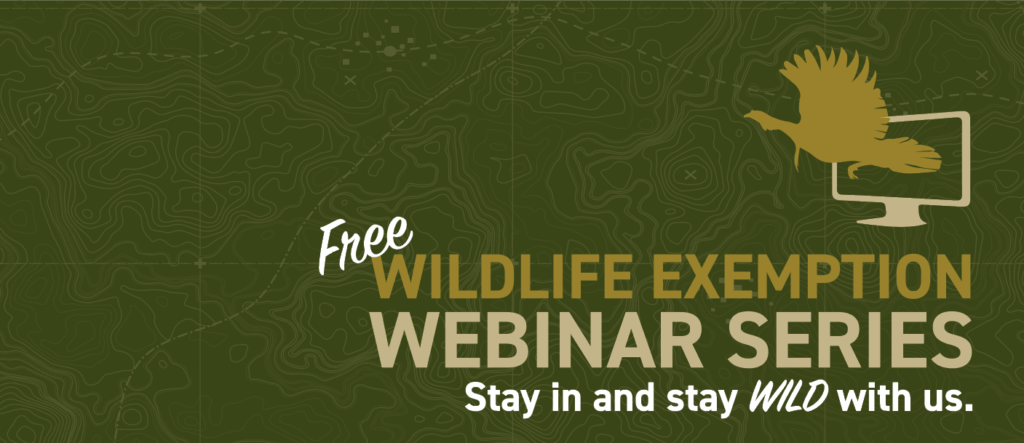
COMING SOON: Plateau’s 2022 Winter Webinar Series
Ready to learn more about Wildlife Management options for your property?
Join us 5:45 – 7:00 pm each Thursday evening from January 13 to March 3 as Plateau Land Specialists and Staff Biologists host FREE educational webinars for landowners. Whether you’re a new landowner or already in Ag or Timber, everyone is invited to join us for our 2022 Wildlife Exemption Webinar Series. Connect with experts and learn how to make the switch to a Wildlife Management Exemption.
Listen along from your computer as our experts cover a variety of land ownership, wildlife management, and Texas ag exemption topics. Get answers to your questions about making the switch, learn about filing deadlines, requirements for activities and record-keeping, and more.
Special Landowner Topics Presented By: Texas Agrilife, Cedar Eaters, and Capital Farm Credit.
View topics and featured speakers and register for upcoming events by visiting Plateau’s Event Directory.
For questions or more information, contact [email protected] or (512) 894-3479.
Top 5 Things to Consider When Crafting Your Estate Plan
By Margaret Menicucci, Braun & Gresham Attorney and Counselor
Braun & Gresham Attorney and Counselor, Margaret Menicucci, covers topics such as protecting yourself and your assets against exploitation and planning for long-term family ownership of rural land. Regardless of the size of your estate, what you own, or what your family circumstances may be, a comprehensive estate plan is an essential tool for everyone.
If you have questions or concerns about estate planning, Braun & Gresham can help. Using the innovative and versatile estate planning solutions that Braun & Gresham is known for, we’ll create the most practical solutions and apply them in a comprehensive plan to achieve your vision for your family and assets.
Please contact Braun & Gresham at (512) 894-5426 or email [email protected].
Field Notes: Pictures & Highlights of Properties in Wildlife Management
Ever wonder how Wildlife Management is benefiting landowners’ property and the wildlife that lives on it? Here are some photos and highlights from Plateau’s field staff and game cameras.
Eastern Woodrat in Harris County, Texas
“Truly masters of getting into places they don’t belong, this large woodrat somehow managed to squeeze into the opening on a titmouse nest box,” said Shane Davis, Staff Biologist who spotted this Eastern Woodrat in Harris County, Texas.
Eastern woodrats inhabits wooded areas, swamps and hedges. Nests can be located in and around rocky bluffs, upland woods, swamps and hammocks, dry scrub pine, grasslands, abandoned buildings, marshes, and refuse piles. In Texas they are mostly found around brush piles, as the eastern woodrat likes the ability to cover and get away from predators quickly.
This species is known for their foraging and caching habits. When searching for food is dangerous or unproductive, animals often use food stores to supplement all or part of their diet. Starting in September, the woodrat will start to forage and store food in its midden for use and survival in the winter. This is a feasible strategy to avoid food shortage. It is the habit of collecting and storing both food and nonfood items that has earned the eastern woodrat is other common name of “pack-rat.”
So many of you are out there doing great work. We appreciate you, and so do the native wildlife on your property and across Texas. Large or small, you are making a difference. Look for more great examples of wildlife and landowner stories and victories in upcoming Seasons Newsletters!
News for Texas Landowners
Prescribed burn kit launch aims at education, advocacy
Article by Texas Agrilife
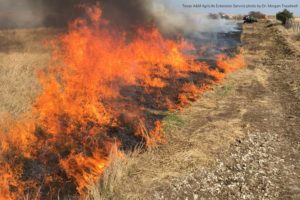
One of the biggest obstacles for landowners and burn managers advocating for prescribed burns is the need to educate communities and county officials about what exactly a prescribed burn entails, the safety protocols involved and the ultimate benefits for the land.
Experts from the Texas A&M AgriLife Extension Service, rangeland and prescribed burn scientists and specialists, and stakeholders all came together to create a communication kit to make it easier for landowners to educate the public and advocate for prescribed burns.
Anyone may now download the Prescribed Burn Kit they developed for free. The inspiration for the Prescribed Burn Kit…
No Bird Wants to Live in a Murder Nest
Article by The Atlantic
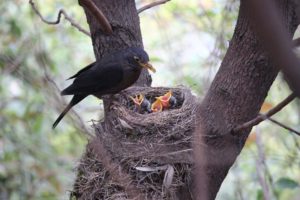 In the spring of 2019, the biologist Tore Slagsvold headed into the forests outside Oslo to stage a series of tiny crime scenes. He didn’t need bullets, or bootprints, or even bodies or blood; only a handful of plush, white feathers.
In the spring of 2019, the biologist Tore Slagsvold headed into the forests outside Oslo to stage a series of tiny crime scenes. He didn’t need bullets, or bootprints, or even bodies or blood; only a handful of plush, white feathers.
Slagsvold’s audience was avian—the region’s blue tits and pied flycatchers. And with any luck, his faux, fluffy evidence was going to scare the bejesus out of them. He set up several nest boxes and scattered the feathers inside, and just as he hoped, the birds balked. They were, Slagsvold told me, afraid of the feathers, or at least what they seemed to represent: fresh violence, a predator on the loose, the possible remnants of a sharp-toothed weasel’s afternoon snack. The likely fate that awaited them, should they dare enter such an accursed abode.
The danger, of course, wasn’t actually real. “The key word is deception,” said Slagsvold, of the University of Oslo…
Texas adopts new management rules for chronic wasting disease in deer
Article by Matt Wyatt for The Houston Chronicle
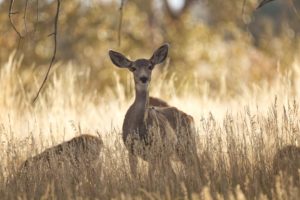
AUSTIN — The Texas Parks and Wildlife Commission adopted a new chronic wasting disease management rule package Thursday, regulations mostly geared toward the state’s deer breeding industry.
Texas Parks and Wildlife Department staff believe the update was necessary because the previous CWD rules were deemed inadequate to prevent the transmission of the always-deadly disease in the wake of a recent outbreak in more than 30 CWD-positive deer at seven facilities across the state.
The most significant aspects of the new rule package include a requirement that breeders ante-mortum (live deer) test every deer 12 months and older at least eight months prior to release…
Whooping cranes are slowly making their way to the Texas coast: Here’s what to know
Article by Christopher Howley for the Corpus Christi Caller Times
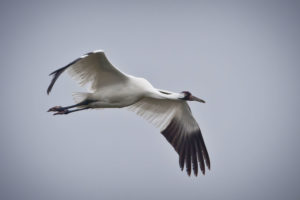
The first sightings of the endangered whooping crane are being reported along the Texas coast.
The Texas Parks and Wildlife Department is reminding residents to be aware of these rare birds as they move across the state. Whooping cranes are the tallest, rarest birds in North America and have a population of around 506.
Starting in their Canadian breeding grounds in Alberta’s Wood Buffalo National Park, the whooping cranes make a 2,500-mile trip to the Texas coast every year. The first family group of the season was seen by Wade Harrell, a U.S. Fish and Wildlife Service Whooping Crane Coordinator, at the Aransas National Wildlife Refuge…
Hunters reminded of proper deer carcass disposal
Article by Texas Farm Bureau
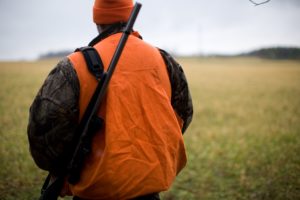
The Texas Animal Health Commission (TAHC) reminds Texas landowners of statewide exotic chronic wasting disease (CWD) susceptible species requirements for the 2021-22 hunting season.
Exotic susceptible species include North American elk or wapiti, black tailed deer, red deer, reindeer, sika deer, moose and/or any associated subspecies and hybrids. Axis deer are not classified as a susceptible species.
“The TAHC and Texas Parks and Wildlife Department (TPWD) have worked diligently to develop and adopt rules to protect CWD susceptible species in Texas,” Dr. Andy Schwartz, TAHC executive director, said. “The new CWD rules that went into effect Oct. 14, 2021 are important steps…



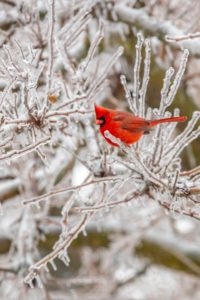
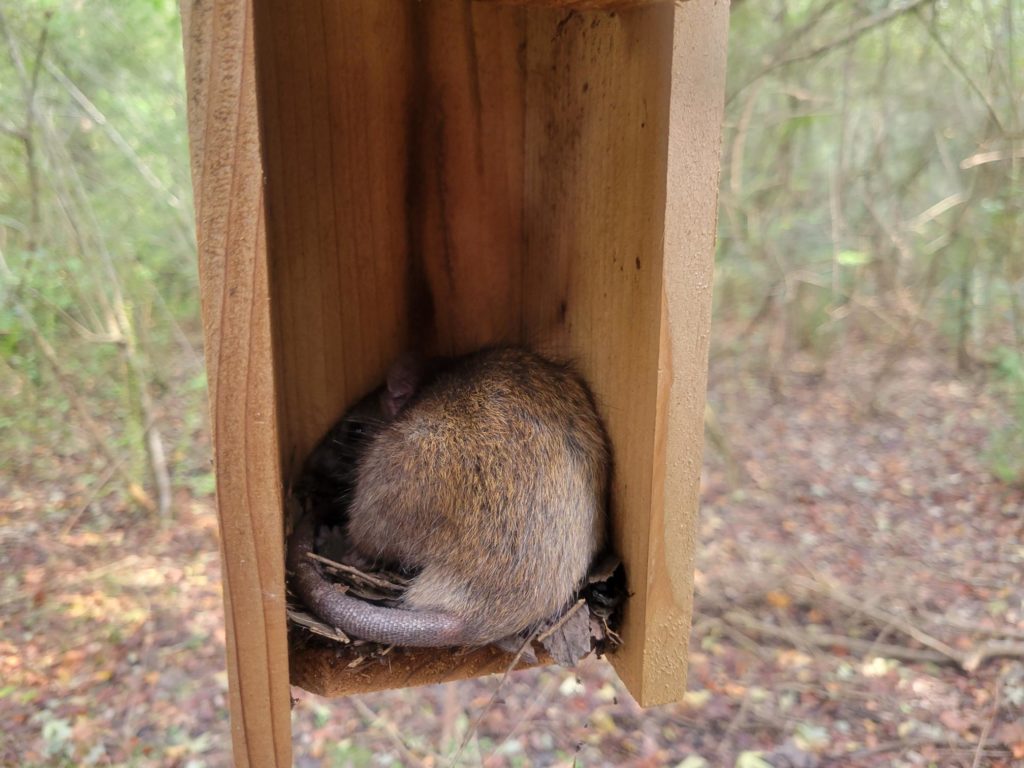



Sorry, the comment form is closed at this time.